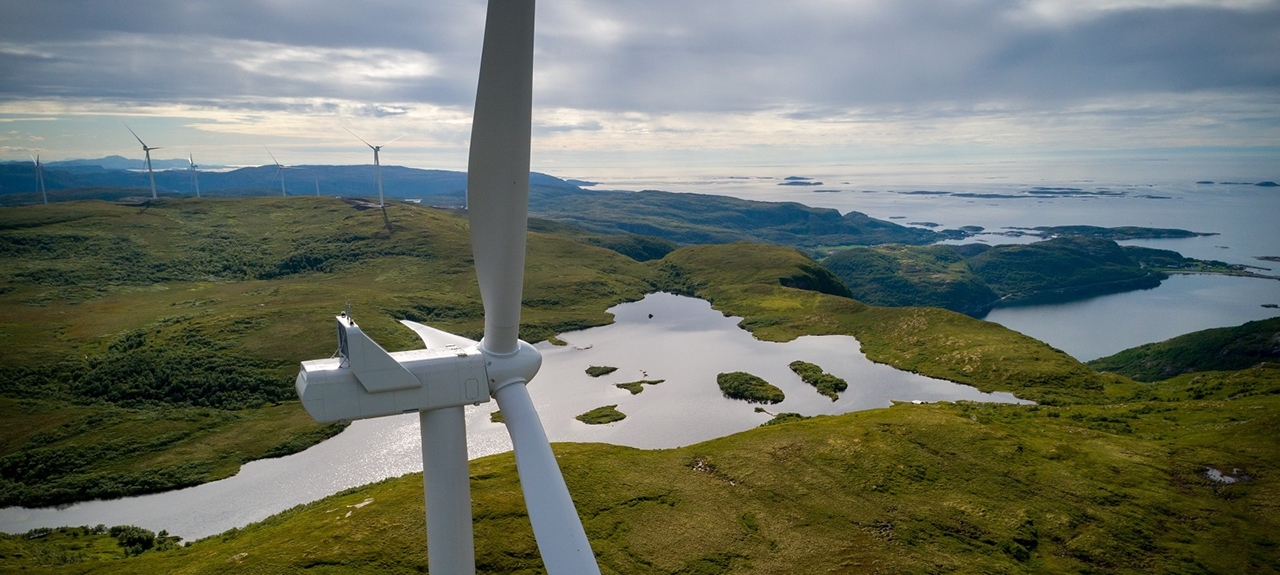American-Made Energy
Learn more about the largest source of renewable energy in the United States and understand how wind turbines provide clean energy to millions of homes both onshore and offshore.
The road to an energy-independent future
"They have really talked to local people a lot and learned a lot.”
"It's just like farming to us, it honestly is, and that's what it is. It's a wind farm.”
"We have a positive impact on the local community.”
"The best view in the world from up here!”
Your questions, answered
Birds: The frequency is very low. Credible estimates indicate that currently installed capacity affects less than 0.01% of most species populations.
Where mortality does occur, albeit very infrequently, most take place during migration, so typically resident species and local populations are unaffected. Many important species have been documented to have low vulnerability to collision (e.g waterfowl like ducks and geese, water birds like cranes, herons and egrets, American golden plover) and utilize areas in wind farms for nesting, foraging and migratory stopover.
Collaboration between government, conservation agencies, and renewable energy developers has helped create rigorous guidelines for protecting bird populations. For example:
- Identifying and avoiding major migratory routes, areas of high conservation value, and critical habitat in siting
- Curtailment for eagle populations
- Providing compensatory mitigation where impact cannot be avoided
Bats: During planning and siting, Steelhead takes steps to identify local bat species and high-risk locations. We work with local and state agencies to create mitigation strategies and comply with federal laws like the Endangered Species Act. Additionally, the Vestas Bat Protection System available with our turbines enables controlled operation during periods of higher bat activity. NRG detection and deterrent systems also minimize impacts.
Vestas is actively engaged in assessing risk to wildlife from wind energy development and supporting development of cost-effective, science-based solutions to ensure responsible development.
During the development process, we coordinate with subject matter experts as well as state and federal agency biologists to design and implement studies to evaluate risk to wildlife. Results are used to inform siting and develop operational protocols for facilities to minimize any potential impacts. All projects complete at least one year of operational monitoring to evaluate impacts and either confirm low risk conclusions or inform management responses if necessary. Vestas is committed to all projects meeting federal, state and local environmental regulations.
Although we can’t change how turbines look, we can hopefully change your outlook on them. Overtime, the turbines will become part of the landscape, just like a new grain elevator or cell phone tower.
Ultimately, they will become a symbol of economic growth and your community’s commitment to helping future generations thrive – and putting America back in charge of its own energy production.
Shadow flicker is when the turbine blades pass between the sun and a home resulting in a flickering phenomenon. It’s similar to how when driving while the sun is behind the trees, sunlight peeks through and creates a flicker.
Turbine shadow flicker typically only occurs a few hours per year cumulatively. On average, it does not occur during 99.7% of daylight hours. To minimize shadow flicker, extensive studies are conducted using industry best practices.
Wind turbines do not emit a lot of noise. In fact, at a setback distance of 1.5x the size of the turbine blade, turbines reach a noise level of 43 decibels, which is similar to that of a refrigerator (40 decibels) or an air conditioner (50 decibels). Typically, two people can carry on a conversation at normal voice levels even while standing directly below a turbine.
Local ordinances and state laws help create guidelines which establish a reasonable level of sound allowed by the wind farm. When designing a wind farm, we also ensure that the turbines are located far enough away from homes so they can’t be heard and to ensure they operate unobtrusively.
No, wind turbines have no adverse health effects. Wind turbines have been operating in the US since the 1880s, and people have been living and working around them for almost a century and a half without any adverse issues.
Today, millions of people around the world live and work near operating wind turbines without negative health impacts. Countless studies have found wind farms to pose no negative health effects.
Ultimately, wind turbines create cleaner and healthier air, leading to a better, more livable environment for all. In fact, wind power reduces US healthcare costs by $8 billion a year through avoided air pollution that triggers smog and asthma attacks.
Wind turbines only use a fraction of the land so that you can continue to safely and effectively grow crops or raise livestock. One turbine and its access roads require minimal acreage, leaving the vast majority of the land open for farming.
For landowners, it’s a great way to secure additional long-term income. Every year, wind farms pay $706 million in landowner lease payments, providing income diversification and increased financial security. During low-production years, this helps keep generational land in the family.
